The lost Tajiks of Pakistan
17.09.2017
Source: The Friday Times - issue 4 August 2017
Arif Hasan Akhundzada on the hidden history of large parts of northern Pakistan – forgotten in centuries of conquest and domination
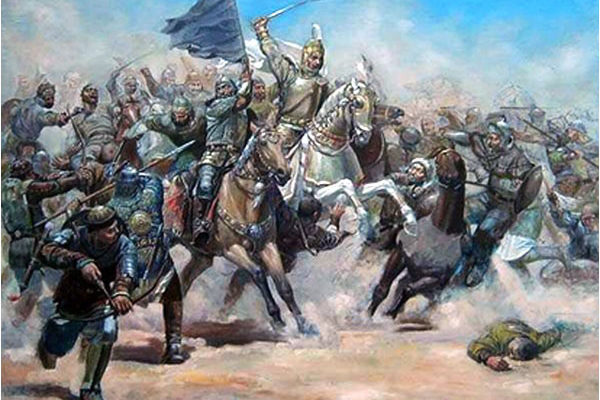
A series of tribal migrations and displacements caused by the Timurids of Central Asia had an impact on the Sultanate of Swat
The medieval Mumlikat-e-Gibar of northeastern Afghanistan and the northern areas of Pakistan was established as a Muslim Tajik sultanate in about 1190 AD, being ruled in tandem by two brothers. Sultan Bahram and Sultan Pakhal (or Fahkal) Gibari were the scions of an earlier local Tajik princely dynasty of Zoroastrian converts, ruling the famous Pech Valley area in Kunar (Afghanistan). Hence their family name Gibari which was taken from “Gabr”, a term used derogatively by early Arabs for unconverted Zoroastrians. The brothers were sons of Sultan Kehjaman, son of Sultan Hindu of Pech. Their family tradition states descent from “Sikandar-e-Zulqarnain” or Cyrus the Great – the founder of Persia’s Achaemenid Empire some 2600 years ago. The Gibari Sultans are more famously known as the “Jehangiri Sultans” after Sultan Jehangir, a later member of this dynasty who became famous due to his achievements. Another name for these Sultans was “Swati” due to the fact that their capital was located at Manglaur in Swat.
The Gibar State was a major vassal state of the Ghori Empire (and the succeeding Delhi Sultanate): originally extending from Kabul and the Hindu Kush on one side, to the Karakorams and River Jhelum and Baramula at the other end. In Pakistan, its territory consisted of Bajaur, Mohmand, Khyber, Kurram, Dir, Chitral, Balor (Gilgit), Kohistan, Swat, Buner, Malakand and the Peshawar Valley districts to the north of River Kabul and west of the Indus (Peshawar, Charsadda, Mardan, Swabi ) – together with Hazara District across the Indus. The regions of the Gibar State located in Afghanistan, in and to the west of the Suleiman Mountains – Kabul, Kapisa, Laghman, Kunar, Badakhshan, Ningarhar and Logar (now all Afghan provinces) besides Khyber and Kurram – had later broken away mostly under other separate Gibari princes by the time that area was invaded by Emir Timur (Tamerlane).
At first Sultan Bahram had established his capital in the village Papin located at the foot of the Safed Koh (Spin Ghar) mountain range in Ningarhar, Afghanistan, while his brother Sultan Pakhal conquered the lands to the east, as far as River Jhelum and made his base in Manglaur in Swat Valley. However Sultan Bahram died prematurely, and his sons fell out amongst themselves and started killing one another. Their uncle Sultan Pakhal had to go to Papin where he was forced to wage war on them to restore order. He thereafter emerged as sole ruler, and Manglaur became the permanent capital of the kingdom, which was also later named after him.
In 1342, Hindu-ruled Kashmir also passed into the hands of another Gibari, Shah Mir (later Sultan Shamsuddin), who had earlier gone and settled there, later setting up a separate vast Muslim kingdom. The original Gibar Sultanate was then reformed into the Pakhli Sarkar (also known as the Kingdom of Swat), and became a dependency of the larger Sultanate of Kashmir; it was given this name in honour of Sultan Pakhal. Later in 1386, the Sultan of Kashmir further strengthened his dependency, adding to it vast swaths of Potohar in the south east. Although no specific records exist, the Walled City of Purushawar (Peshawar) itself was believed to have been always under the nominal control of the Jehangiri Sultans and their overlords in the Delhi Sultanate. The previous localities of the original Gibar State located to the west of the Suleiman Mountains in Afghanistan – Kabul, Kapisa, Laghman, Kunar, Badakhshan, Ningarhar and Logar (presently Afghan provinces) – had later broken away under the rule of separate Gibari princes. The original Gibar State had almost exactly the same boundaries as that of ancient Gandhara immediately preceding it. It is also a strange coincidence that the western border of the later Pakhli Sarkar very closely resembled the Durand Line which has now taken its place. The mention of Chinggis (Genghis) Khan’s passage through the early Gibar State has been reliably documented, about 28 years after it was set up.
With the exception of Kashmir and Hazara, the dominant rural population of the whole area up to the River Indus and above the River Kabul (Gandhara), at that point in time, consisted of Shalmani and Tirahi Tajiks and their aristocratic Dehqan ruling class, all of whom are believed to have been among the area’s ancient inhabitants since the days of the great Persian empires before Islam. There were also Dards (Kohistanis) in the region. Prakrit speakers (i.e. early Hindko speakers) lived alongside in the urban settlements. It is very clear that Tajiks (ethnic Persians or Farsiwans in the east) then existed far beyond what are now regarded as their traditional ethnographic borders in Wakhan and the Hindu Kush. This is further borne out by the fact that Gandhara had remained a “satrapy” or province of Imperial Persia for some 1,000 continuous years before Islam. The forms of Persian that they spoke then are now extinct.
There was also then an old Pashtun tribe in the region, the only Pashtun tribe present at that time – by the name of Dilazak, which was very widely distributed. It was said to have come here very late in the day, with the first Muslim conqueror of north India, Mahmud Ghaznavi, somewhere in the 11th century. Most of the Dilazak Afghans were much later expelled across the River Indus into Hazara and Chachh areas by the invading Yusafzais and their allies – where they are today. The greater part of those who remained behind most likely changed their identity by adopting the name of their kindred Khattak tribe, which lay further to the south, on the perimeter of Peshawar Valley.
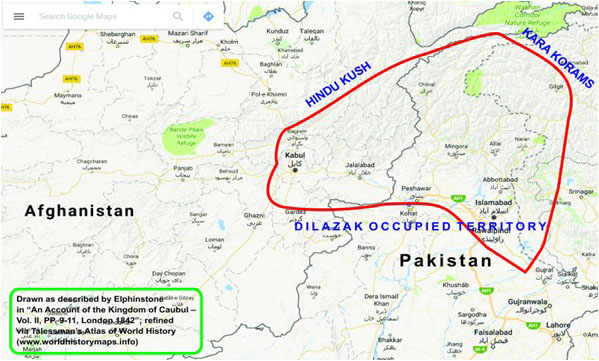
The territory of the Tajik-dominated Gibar State at its height, from 1200 to 1400 AD
Islam first came to the Gandhara region with Mahmud Ghaznavi, but actually began taking hold here during the Tajik Swati-Gibari rule. However sizeable Hindu and other non-Muslim populations still remained. Mir Syed Ali Hamadani, the Persian saint who introduced Islam into Kashmir, was a trusted confidante of the Jehangiri Sultans of Swat. He died in the fort of the Gibari governor of Bajaur area, Malik Khizar Ali Gibari. Though the Gibaris had become staunch Muslims by all accounts, local Muslim society was still in the process of formation.
In 1398 Amir Timur (Tamerlane) annexed the Pakhli Sarkar’s Hazara portion across the Indus. In the latter, he settled his Turkic soldiers who established the small independent Turkic kingdom of “Pakhli-Hazara”, which was to flourish for 323 years. Thus the old Pakhli Sarkar or Swat Kingdom was reduced in its extent to the areas of Bajaur, Dir, Chitral, Gilgit, Swat, Buner, Malakand, Kohistan and Peshawar Valley – governed in the shape of four wilayats consisting of Bajaur, Swat, Buner and Hashtnagar.
The Tajik Swati Kingdom of Pakhli Sarkar finally came to an end as a result of two factors. Mass migrations swept the area, emanating from southern Afghanistan and involving various Pashtun tribes of the Eastern Sarabani section – headed by the Yusufzais – which had been provoked by Timurid political moves. At the same time, another Timurid prince from Ferghana, Zaheeruddin Babur, also invaded India. In 1519 he attacked and conquered the Kingdom of Swat, the Pakhli Sarkar, as the first part of his strategy to overthrow the Delhi Sultanate and establish the Mughal Empire seven years later. Then in 1586 Kashmir also passed into the hands of his grandson Akbar. The Sarabani Pashtun tribes, whose arrival en masse had flooded the area west of the Indus, at around the same time that Babur came – gradually settled in the lands of the Kingdom of Swat, and then established their domination over the area. In the latter, they were helped by Babur, who required their assistance in conquering India. Though the Kingdom of Swat was overthrown in 1519, the completion of the usurpation of its lands by the Yusafzais and their allies is believed to have taken place over a 70-year period. This process began with the massacre in 1481 by Mirza Ulugh Beg – the Timurid prince – of their tribal chiefs in Kabul, which initiated their mass exodus eastwards. Ulugh Beg was Babur’s maternal uncle and governor of Kabul. The greater part of the now extinct Shalmani and Tirahi Tajik populations, and their Dehqans who did not flee or get killed, were forcefully absorbed into these tribes under new Pashtun identities. Their refined culture was assimilated by the invading Pashtun tribes. Many from among the Tajiks were subjugated into bondage and serfdom. The Persian term Dehqan, which once meant aristocratic landed proprietor, became synonymous with tenant cultivator or serf in local parlance. The great majority of Tajiks fled to Hazara, where they settled and now speak Hindko – and are known as “Swatis”. The names of Shalman and Tirah also still exist as localities in Khyber Agency, now populated by Afridis – who were not there in those days.
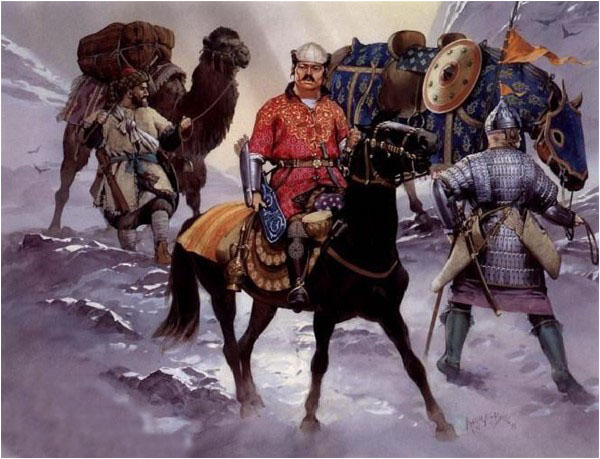
Babur, depicted here travelling in mountainous terrain, fought a campaign in Bajaur years before his advance to Delhi
Babur first attacked the huge Gibar Qila fortress in Bajaur, killing Malik Haider Ali Gibari, the Swati governor of the Bajaur wilayat of Pakhli Sarkar. He also massacred 3,000 inhabitants of the town located inside the fortress walls. The Mughals were at an enormous tactical advantage, because on this occasion they employed firearms, this being the first ever instance of guns being used in the Subcontinent. Babur’s victory was assured because the Shalmani Tajik troops ran away, being frightened by the bangs and smoke of the unknown new weapons. Babur chronicles this conquest in all its vivid and bloody details in his memoirs, the Baburnama. The conquest of Swat Valley itself took place later that year by the Yusufzais, and was a bit different. Employing a mixture of intrigue, deception and aggression, they drove out the governor of the Hashtnagar (Charsadda-Mardan flatlands) region, Mir Hinda Dehqan. His rapid retreat towards his village of Thana in Malakand and the dismal performance of the assembled Swati armies, and their failed last stand there, ensured that the pursuing Yusufzais gained access to the biggest prize of all – the lush valley of Swat. The Yusufzais had been living as refugees and workers in the area for 35 to 40 years, and were familiar with the riches and beauty of Swat, a place they had frequently visited in order to sell straw mats. It was not long before they defeated the last ruler of Swat, Sultan Owais, who abandoned his capital and fled to Nihag Darra in Dir where he took refuge among the ‘kafir’ population. The Swatis were taken completely unprepared.
Thus the old Turco-Tajik Ghorid-Khilji/Ghilji-Afghan order of Muslim rule in India passed on to the Timurid (Mughal) order with the fall of the joint kingdoms of Swat and Kashmir – and their patron the Delhi Sultanate. The Timurid order itself was replaced by the Afshar-Abdalid order to the west of the Indus (in Afghanistan) in 1747 – while in India it remained in an increasingly diminishing and emasculated form for a further 110 years till it gave way to the British Raj.
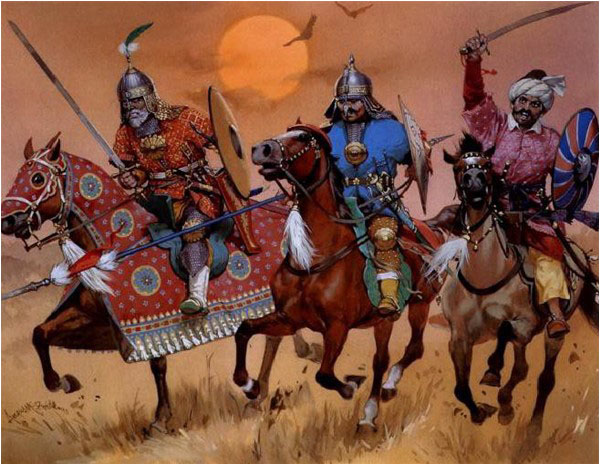
Knowledge of the Tajik origins of the medieval Swati ruling dynasty remained an oral tradition for very long
This article will come as a surprise to most, because there is no mention of any Gibar State or Pakhli Sarkar – or any Tajik population at all – in local public discourse. It is not at all insignificant as a subject, nor is it that far back in history, but its total absence from our country’s formal and national historiography seems very surprising – in particular with the continual emphasis on reminding everyone about how Islam came to India and furnished the basis for Pakistan. The Ghoris are frequently mentioned in this context. But no one even knows about their vassal Tajik kingdom that spanned the entire Northern Areas of Pakistan as well as a sizeable portion of northeast Afghanistan. The Gibar Kingdom and its sultans find mention in several standard and iconic early and medieval Muslim historical texts. These include the Tabaqat-i-Nasiri, Tuzuk-i-Timuri, Baburnama, Ain-i-Akbari, Jehangirnama, Shahjehanama, Alamgirnama and Siyar-ul-Mutakhireen among others. The Jahangiri Sultans and their times are mentioned in a wealth of detail by prominent British colonial writers such as Major H.G. Raverty. But as regards other modern scholarship, the situation is very dismal.
At times there even seems to be a formal “cover-up conspiracy” spanning the centuries, with regard to this legacy, and its overthrow and takeover. A good example in this regard would be to refer to Sir Olaf Caroe’s treatment of the matter. The last British colonial Governor of the NWFP (now KP) and a senior colonial bureaucrat and strategic planner, his book The Pathans is still considered by most to be the best international work so far on the Pashtun ethnicity and their history. An otherwise keen and erudite scholar such as Caroe – who it is evident, was always anxious and at pains to show his propriety in matters of knowledge – can only casually mention the Gibari-Swati Sultans, and that also just three times, in his celebrated magnum opus. It is as if he was referring to a quantity so well known that it merited no further academic elucidation or introduction. But in fact this seems to smack of a wily deliberation not innocence: a sly way of distracting attention from and diminishing the importance of a key historical matter at the same time! But that comes as no surprise, as upon examining The Pathans it is all too evident where the personal sympathies of this colonial official lay – as well as those of the establishment he was tasked to work for. We see that glaringly in his dedication of the book on its title page to the Yusafzais, as well as his wish recorded therein to be considered as an “honourary Yusafzai” – a tribe which, like all the Sarabani Pashtuns, constituted the backbone of the British Raj in its Pashtun theatre throughout. On the other hand, eminent scholastic personages such as Pakistan’s foremost historical authority, the late Dr. A.H. Dani – though he belonged to the Northern Areas himself – has declined any mention of the Kingdom of Swat, save for a few sentences which he has quoted from an English author. He mentions in passing the (Gibari) Sultans of Kashmir, but not in the context of their background or the nature of their linkages with Swat. Awareness of this history has tended to exist as a memory in the informal oral discourse of the local countryside, and its illiterate folkloric milieu. Or it remained as confidential knowledge circulating among the local rural elites, discussed discreetly. These events are also extensively recorded in the traditional vernacular histories of the Yusafzais themselves, in books such as Tawareekh-i-Hafiz Rehmat Khani and books by the contemporary saint Akhund Darweza such as Tazkiratul Abrar Wal Ashraar. But significant as they are, these accounts are far from being mainstream, visible or accessible to modern educated audiences of our own country, let alone internationally.

Depiction of a Yusufzai warrior
Without this historical cover-up, the history and culture and other causes of this area would appear in a new light, and the mysteries and enigmas surrounding it and the historical development of the Pashtun ethnicity, culture and its accurate academic definition – a matter which is so lacking and deficient – would be dispelled. Systems of governance keep changing and social orders come and go all the time. That is what history is all about. But not many situations have such a legacy of hidden skeletons in closets – and not for such extended periods of time. With certain strong parallels to the Norman invasion and takeover of Britain in 1066, the historical process of the fall of the Kingdom of Swat has, however, been obscured by its local perpetrators and their Mughal and later British helpers. And we may surmise that those defeated also remained silent, out of not only fear but shame too. Moreover Britain’s Norman analogy cannot pertain to our present context, as by 1566 – 500 years after its Norman takeover – Britain was on the way to dominating the globe, while the same cannot be said of the inhabitants of the region we are looking at. Unlike the Norman invasion of Britain, the Sarabani-Timurid overthrow of the Kingdom of Swat or the Pakhli Sarkar was more sinister and insidious in character – and some of its consequences are fully manifesting themselves even today, centuries later.
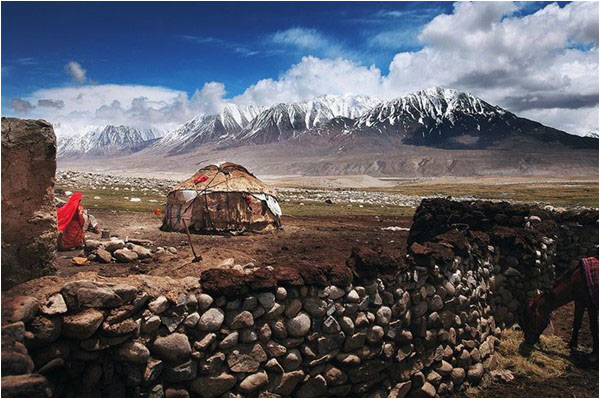
Discussion of a Tajik presence beyond the Wakhan region, in modern-day northern Pakistan, is rare
Another factor worthy of mention – and one which has greatly aided in uncovering this mystery – is that within the last 15 years, incredible quantum leaps in the scope of the revolutionary young science of genetic genealogy have at last shed light against which no cover-ups can stand a chance. The forcefully absorbed and “Pashtunised” original Tajik populations and lineages of the Peshawar and Swat Valley regions have been revealed in surroundings least expected. Also, startling facts have been revealed behind the true ethnic origins of the presently dominant section of Sarabani Pashtun tribes which suppressed these aboriginal inhabitants 500 years ago, and subsequently also came to dominate their own Afghan ethnicity. Not only that, but genetic studies have corroborated the underlying traditional Ghori Tajik origin the greatest Afghan tribal confederacy, the Bettani (Ghalji) – which is in fact now the largest group of Pashtuns and historically the most accomplished. But that is another subject…
-------------------------------
Arif Hasan Akhundzada on the hidden history of large parts of northern Pakistan – forgotten in centuries of conquest and domination
The writer is an author, activist and researcher into historical matters. He belongs to Shabqadar in Charsadda district, Khyber-Pakhtunkhwa
Source: The Friday Times - issue 4 August 2017
Link: http://www.thefridaytimes.com/tft/the-lost-tajiks-of-pakistan/
Share This
Your comments on this
